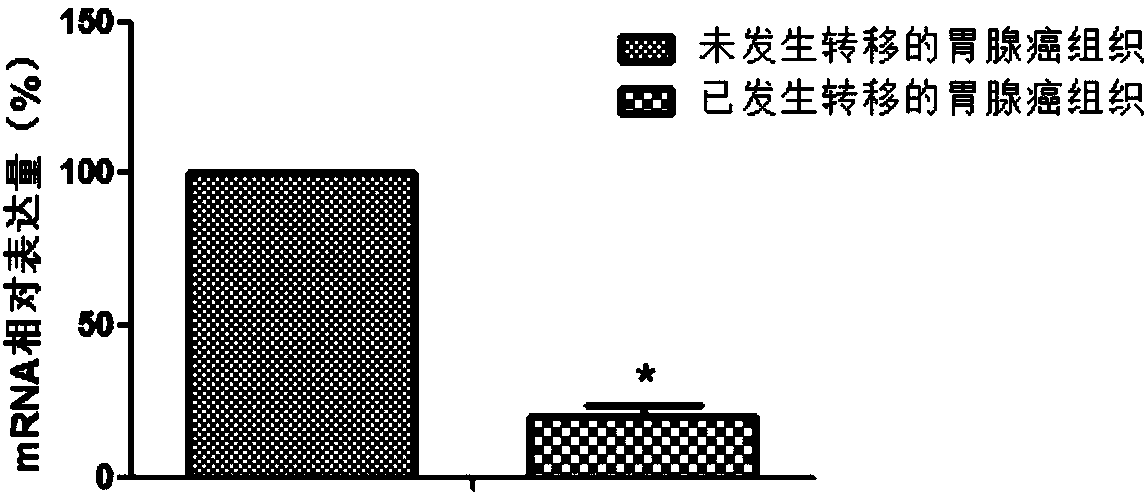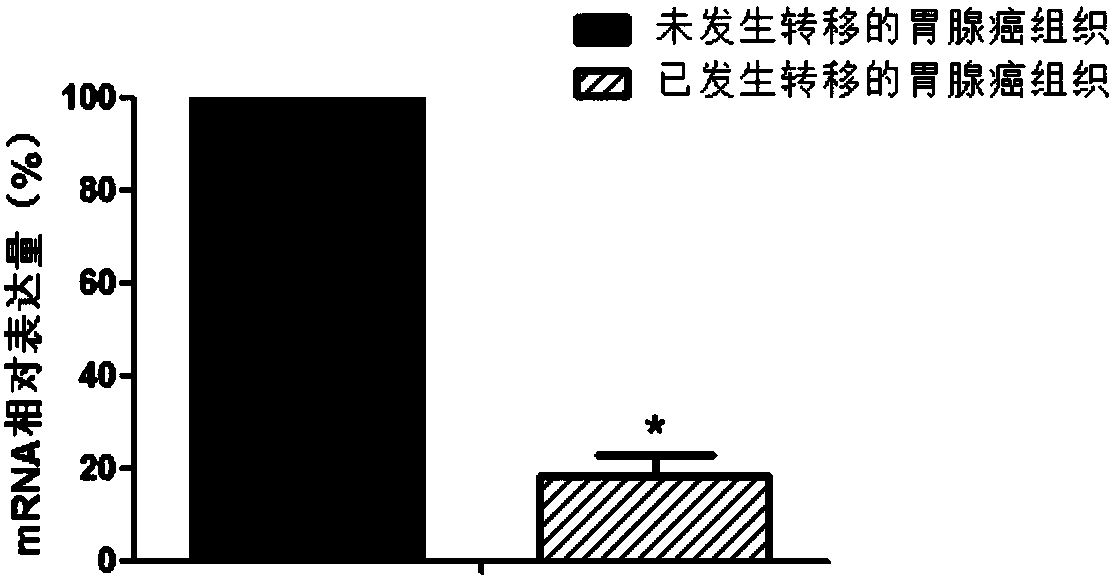Application of using PLCD4 gene as gastric adenocarcinoma transfer diagnosis marker
A gastric adenocarcinoma and gene technology, applied in the biological field, can solve problems such as unclear molecular mechanism
- Summary
- Abstract
- Description
- Claims
- Application Information
AI Technical Summary
Problems solved by technology
Method used
Image
Examples
Embodiment 1
[0063] Example 1 Differential expression of PLCD4 gene
[0064] 1. Sample acquisition: 8 cases of gastric adenocarcinoma tissue (including 4 samples with metastasis and 4 samples without metastasis). The above samples are surgical resection specimens of patients with gastric adenocarcinoma. All the above specimens were obtained with the consent of the organizational ethics committee. The clinical data of the tissue samples include: gender, age, tumor size, pathological grade (Edmonson), metastasis or recurrence, etc. The above samples were stored in liquid nitrogen.
[0065] 2. Acquisition of RNA from gastric adenocarcinoma metastasis tissue
[0066] Tissue RNA was extracted using Norgen RNA extraction kit.
[0067] Tissue Lysis:
[0068] 1) In a clean area with less RNase interference, use a mortar containing an appropriate amount of liquid nitrogen to weigh about 20 mg of the isolated tissue sample, and grind it to powder with a pestle;
[0069] 2) Transfer the sample t...
Embodiment 2
[0102] Example 2 Large sample verification of differentially expressed genes
[0103] 1. Collect 80 gastric adenocarcinoma tissues (including 40 samples with metastasis and 40 samples without metastasis) according to the method of Example 1. The above samples are surgical resection specimens of patients with gastric adenocarcinoma. All the above specimens were obtained with the consent of the organizational ethics committee. The clinical data of the tissue samples include: gender, age, tumor size, pathological grade (Edmonson), metastasis or recurrence, etc.
[0104] 2. Tissue total RNA extraction
[0105] Step is with embodiment 1.
[0106] 3. Reverse transcription
[0107] The reverse transcription of RNA was carried out using the reverse transcription kit of TAKARA company.
[0108] 4. QPCR
[0109] (1) Primer design
[0110] QPCR amplification primers were designed according to the coding sequences of PLCD4 gene and GAPDH gene in Genbank, and synthesized by Shanghai ...
PUM
 Login to View More
Login to View More Abstract
Description
Claims
Application Information
 Login to View More
Login to View More - R&D
- Intellectual Property
- Life Sciences
- Materials
- Tech Scout
- Unparalleled Data Quality
- Higher Quality Content
- 60% Fewer Hallucinations
Browse by: Latest US Patents, China's latest patents, Technical Efficacy Thesaurus, Application Domain, Technology Topic, Popular Technical Reports.
© 2025 PatSnap. All rights reserved.Legal|Privacy policy|Modern Slavery Act Transparency Statement|Sitemap|About US| Contact US: help@patsnap.com



